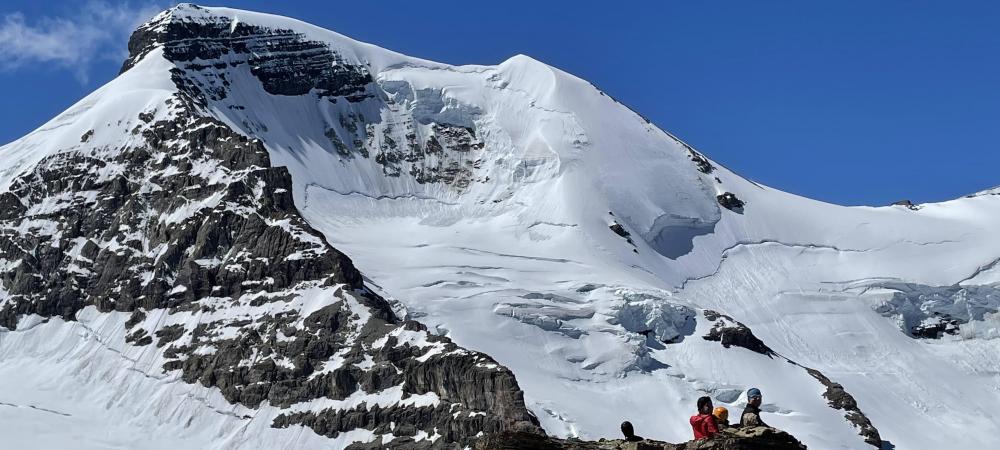
ACMG Mountain Conditions Summary for the Rockies and Columbia Mountains. July 1, 2021.
The heat dome may be leaving us soon, but its results will be with us for awhile.
WEATHER
It's been sunny and hot for the past week, with record-setting temperatures throughout the mountain ranges. For example, at Parker's Ridge at 2300 m there have been overnight lows of 20 degrees, and highs approaching 30. Banff and Jasper both broke all-time high temperature records on Monday, and then again on Tuesday (39C / 102 F at my house in Banff).
A change is in the works, with significantly cooler temperatures beginning on the weekend - there is a possibility of highs in the single digits at treeline. We can also expect regular precipitation events to occur throughout the week, although different zones can expect different amounts. In the Columbias it looks like afternoon showers, and I suspect lightning will be in play as well. In the Rockies it looks like perhaps a more organized system with more precipitation on Sunday. In both regions it could be even wetter next Thursday (July 8th), but that is a long ways out and forecasts could evolve by then.
CONDITIONS
The heat has wreaked havoc on the alpine snow. A couple of weeks ago it seemed like late spring, but now it seems like we are in mid-summer.
Glacier coverage has seen the biggest change. That said, snow travel has been surprisingly good and crevasse bridges have been strong even without overnight freezes. But things change so rapidly at this time of year that observations may become out of date within a day.
Ice faces are just that - ice. Expect rockfall, and bergschrunds are large.
I expect the highest elevation mixed alpine ridges and faces to still be difficult and hazardous due to snowy conditions not having quite cleared up yet. Expect wet rock, sloppy snow, and drooping cornices.
Alpine routes that are lower elevation and/or which face south, east, and west could be in better condition than high-elevation north facing routes.
All normal rock climbing venues are good to go. Hiking trails will still have some snow above treeline but the snow has been firm enough for good walking.
HAZARDS
Wet snow avalanches starting by 10 AM or earlier have been a regular occurrence. Although I haven't seen a cornice fall, I suspect they are happening too. A guide observed a size 2 slab avalanche on a north aspect at 3000 m, one metre deep, likely cornice triggered, which had run within the last several days during the hot spell.
With the change in weather pattern, we can expect lightning to be a concern.
Firm snow on hiking trails presents a fall and slide risk, last week someone slid down a snow patch and ended up in a cold alpine lake. A quick reaction from other hikers saved the day and avoided a potential drowning or hypothermia situation.
We are getting into busy season and the chance of someone being above or below you on your intended route is high. Utilize your safe spots as best you can, and consider other route options if another party is on your climb.
Rockfall in the alpine will be my main concern in the coming week. There is enough snow left to keep pumping water over rock faces and ledges. And rocks embedded in ice faces and glacier tongues will be loosening.
OBJECTIVES
This week I would be headed for:
- rock climbs
- alpine rock in Rogers Pass or the Bugaboos if the forecast is dry
- glacier routes where I can move fast with early starts on cool mornings
- front range scrambles, keeping an eye out for lightning and rain
- flower hikes
I am avoiding:
- ice faces
- long mixed routes where deeper snow and rapidly warming mornings will create avalanche, cornice fall, and rockfall hazards
- shaded alpine rock climbing above 2700 m
- highest elevation hiking trails
Keep an eye on the forecast, and have different options in mind to be able to adjust to the variable weather that looks to be coming our way. There is always something safe to do if you prepare well and choose wisely.
Mark Klassen
Mountain Guide